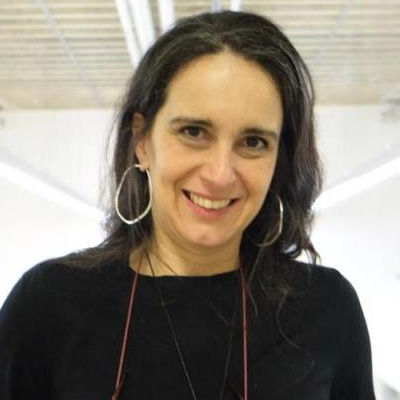Sustainability in Architectural Education: Legacy and Experimentation
A special issue of Sustainability (ISSN 2071-1050). This special issue belongs to the section "Sustainable Education and Approaches".
Deadline for manuscript submissions: closed (10 April 2022) | Viewed by 42756
Special Issue Editors
Interests: environmental design; natural ventilation and passive cooling; innovative natural cooling methods; sustainability in architecture
Special Issues, Collections and Topics in MDPI journals
Interests: the environmental performance of existing buildings; design methodologies for environmental design; the environmental performance of the informal city; future trends of environmental design; the environmental implications of urban density
Special Issue Information
Dear Colleagues,
In the context of the 2018 resurgence of the global movement of Climate Action, architects around the world have taken responsibility for actions against Climate Change and for abiding to the United Nations Sustainable Development Goals (SDGs) in both practice and education. The various international Architects Climate Action Networks in 2019, followed by the UK manifesto of Architects Declare, underpin a wave of greater awareness, positive action and greater commitment to sustainability in architecture through individual practice as well as policy-based systemic change [1]. Architecture schools around the world have joined this movement and pledged to follow the UN SDGs as part of their curricula. However, the attempt to embed principles of sustainability and environmental design in architectural education is not new, and can be traced back decades, if not centuries or millennia. There is, nevertheless, a genuine concern that the current level of sustainability education provided in the mainstream architectural curricula is no longer sufficient to face the urgent climate challenges [2,3], and that a stronger transdisciplinary approach needs to be followed where architectural students are formed and empowered with a different pedagogical paradigm, better tools and diverse sets of skills.
This Special Issue seeks to examine the barriers and opportunities within the international architectural education scene in shifting values and creating rapid change in curricula and delivery. It is important to acknowledge the evolution of sustainability in architectural education, encompassing multiple practices involving design studios and technical courses, and to identify early efforts and ways we can build up from those legacies. We must avoid the danger of constantly reinventing the wheel and the fallacy of considering sustainability a fringe subject at odds with other drivers of architectural education, traditionally more concerned with aesthetics and representation. Equally, it is important to recognise the emergence of genuine experimentations and unconventional didactic practices which are resulting from better knowledge, greater awareness, more refined analytical tools and, more recently, the new avenues opened by online and digital learning during the pandemic. Hence, this Special Issue welcomes contributions on historic perspectives and evaluations, experimental learning methods, pedagogical theories, current case study practices, and emerging trends in the integration of sustainability in architectural education globally. This Issue will aim to take the pulse and give a snapshot of the various efforts made internationally into enabling climate action through architectural education and the formulation of related new educational paradigms.
References:
- Architects Climate Action Network (ACAN), 2019. Website online: https://www.architectscan.org/action (Accessed on Jan 2021).
- Altomonte, S.; Canguelli, E.; De Herde, A.; Horvath, S.; Lopez De Asian, M.; Riemer, A.; Yannas, S. Education for Sustainable Environmental Design – The EDUCATE Project, 2012. Available online: https://www.researchgate.net/publication/331528095_EDUCATION_FOR_SUSTAINABLE_ENVIRONMENTAL_DESIGN_THE_EDUCATE_PROJECT (Accessed on Jan 2021).
- Grant, E. J. Mainstreaming environmental education for architects: the need for basic literacies. Buildings and Cities, 1(1), 538–549. DOI: http://doi.org/10.5334/bc.41.
Dr. Rosa Schiano-Phan
Dr. Gonclaves Joana Carla Soares
Guest Editors
Manuscript Submission Information
Manuscripts should be submitted online at www.mdpi.com by registering and logging in to this website. Once you are registered, click here to go to the submission form. Manuscripts can be submitted until the deadline. All submissions that pass pre-check are peer-reviewed. Accepted papers will be published continuously in the journal (as soon as accepted) and will be listed together on the special issue website. Research articles, review articles as well as short communications are invited. For planned papers, a title and short abstract (about 100 words) can be sent to the Editorial Office for announcement on this website.
Submitted manuscripts should not have been published previously, nor be under consideration for publication elsewhere (except conference proceedings papers). All manuscripts are thoroughly refereed through a single-blind peer-review process. A guide for authors and other relevant information for submission of manuscripts is available on the Instructions for Authors page. Sustainability is an international peer-reviewed open access semimonthly journal published by MDPI.
Please visit the Instructions for Authors page before submitting a manuscript. The Article Processing Charge (APC) for publication in this open access journal is 2400 CHF (Swiss Francs). Submitted papers should be well formatted and use good English. Authors may use MDPI's English editing service prior to publication or during author revisions.
Keywords
- sustainable architecture
- environmental design
- architectural education
- climate change
- sustainable development goals
- higher education
Benefits of Publishing in a Special Issue
- Ease of navigation: Grouping papers by topic helps scholars navigate broad scope journals more efficiently.
- Greater discoverability: Special Issues support the reach and impact of scientific research. Articles in Special Issues are more discoverable and cited more frequently.
- Expansion of research network: Special Issues facilitate connections among authors, fostering scientific collaborations.
- External promotion: Articles in Special Issues are often promoted through the journal's social media, increasing their visibility.
- e-Book format: Special Issues with more than 10 articles can be published as dedicated e-books, ensuring wide and rapid dissemination.
Further information on MDPI's Special Issue polices can be found here.






